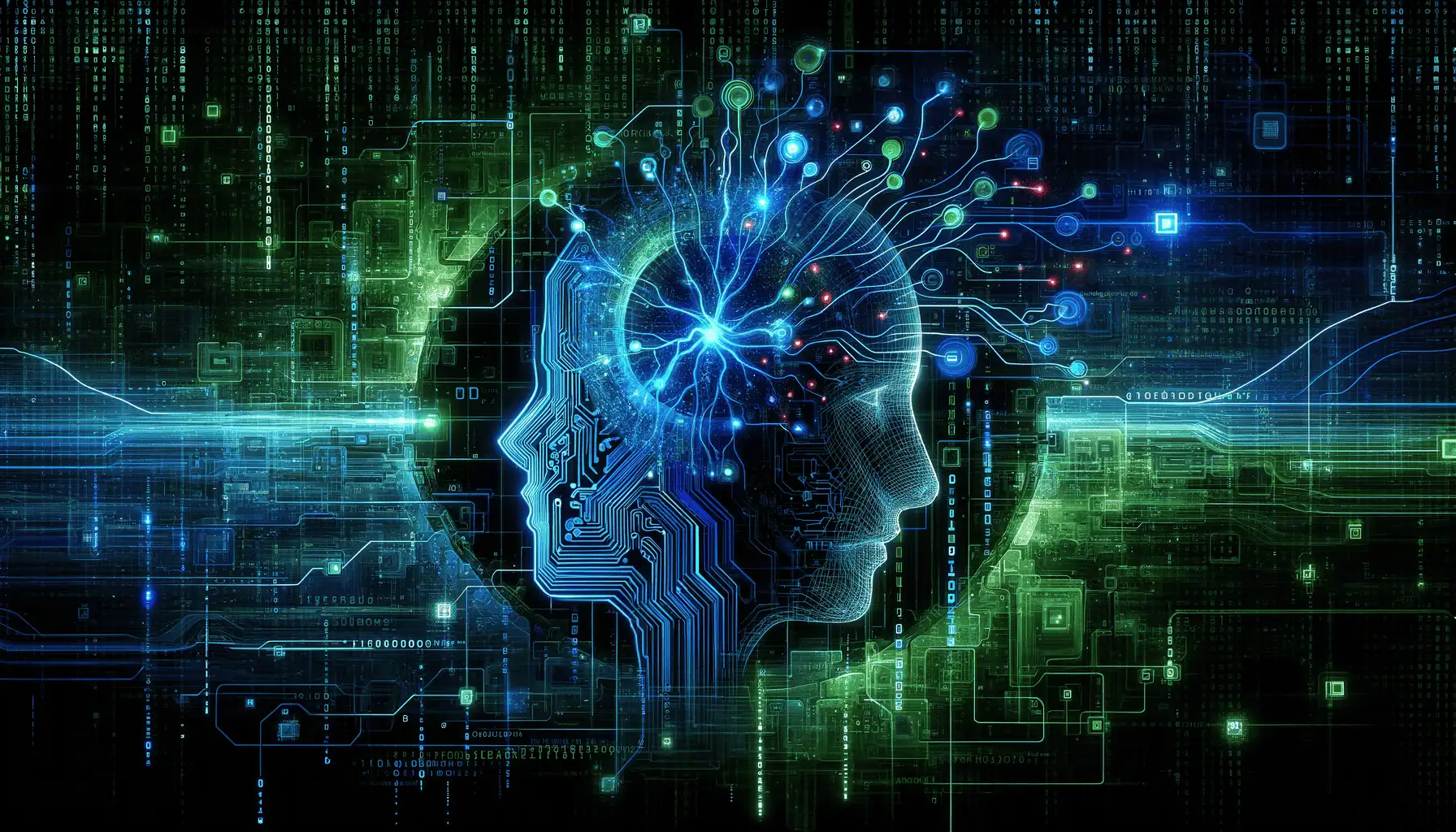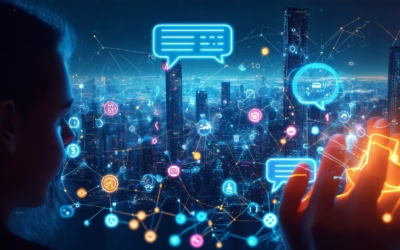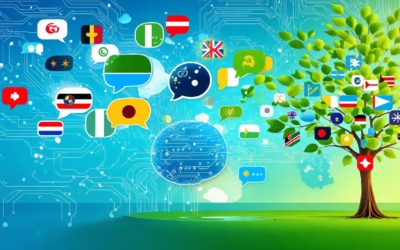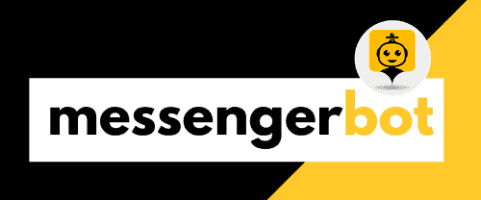In the rapidly evolving landscape of artificial intelligence, chat bot open source solutions have emerged as powerful tools for businesses and developers alike. These free AI chatbots offer a cost-effective way to enhance customer engagement, streamline operations, and explore the possibilities of conversational AI. From sophisticated open source chatbot frameworks to user-friendly chatbots online free, the options are diverse and constantly expanding. This article delves into the world of open source chat bots, comparing alternatives to popular platforms like ChatGPT, and exploring the best AI chats available. Whether you’re a developer looking for an open source chatbot API or a business owner seeking chatbot examples to implement on your website, we’ll guide you through the top choices and help you navigate the exciting realm of free chatbot technologies.
Understanding Open Source Chat Bots
Open source chatbots have revolutionized the way businesses interact with customers, offering a cost-effective and customizable solution for automated communication. As a leader in AI-driven customer engagement, I’ve seen firsthand how these tools can transform customer service and marketing strategies. Open source chatbots provide the flexibility and transparency that many companies, including Messenger Bot, value in our quest to deliver exceptional user experiences.
Is there an open source chat AI?
Yes, there are several open-source chat AI options available that cater to various needs and skill levels:
- Bot Libre: A versatile platform offering customizable avatars and natural language processing.
- RASA: An advanced framework for building contextual AI assistants, supporting multiple languages.
- Hugging Face’s Transformers: An open-source library with pre-trained models for NLP tasks.
- DeepPavlov: A framework focused on production-ready conversational agents.
- Botpress: An intuitive platform with a visual flow editor, suitable for developers and non-technical users alike.
- Mycroft AI: An open-source voice assistant platform adaptable for text-based chat applications.
These platforms offer varying levels of customization and features, allowing businesses to create chatbots tailored to their specific needs. While we at Messenger Bot provide a sophisticated proprietary solution, we recognize the value these open-source alternatives bring to the market.
Benefits of open source chatbots
Open source chatbots offer numerous advantages that make them attractive for businesses of all sizes:
1. Customization: Developers can modify the source code to fit specific requirements, enabling unique functionalities that proprietary solutions might not offer.
2. Cost-effectiveness: Many open source chatbots are free to use, reducing initial investment costs for businesses.
3. Community support: Active developer communities provide continuous improvements, bug fixes, and support.
4. Transparency: Access to the source code allows for better security audits and trust in the system’s operations.
5. Integration flexibility: Open source chatbots can often be easily integrated with existing systems and third-party services.
6. Learning opportunities: Developers can study and learn from the code, improving their skills and understanding of AI and NLP technologies.
7. Scalability: As your business grows, open source solutions can be scaled to meet increasing demands without hefty licensing fees.
While open source chatbots offer these benefits, it’s important to note that they may require more technical expertise to implement and maintain compared to turnkey solutions like Messenger Bot. However, for businesses with the right resources, open source chatbots can be a powerful tool in their customer engagement arsenal.
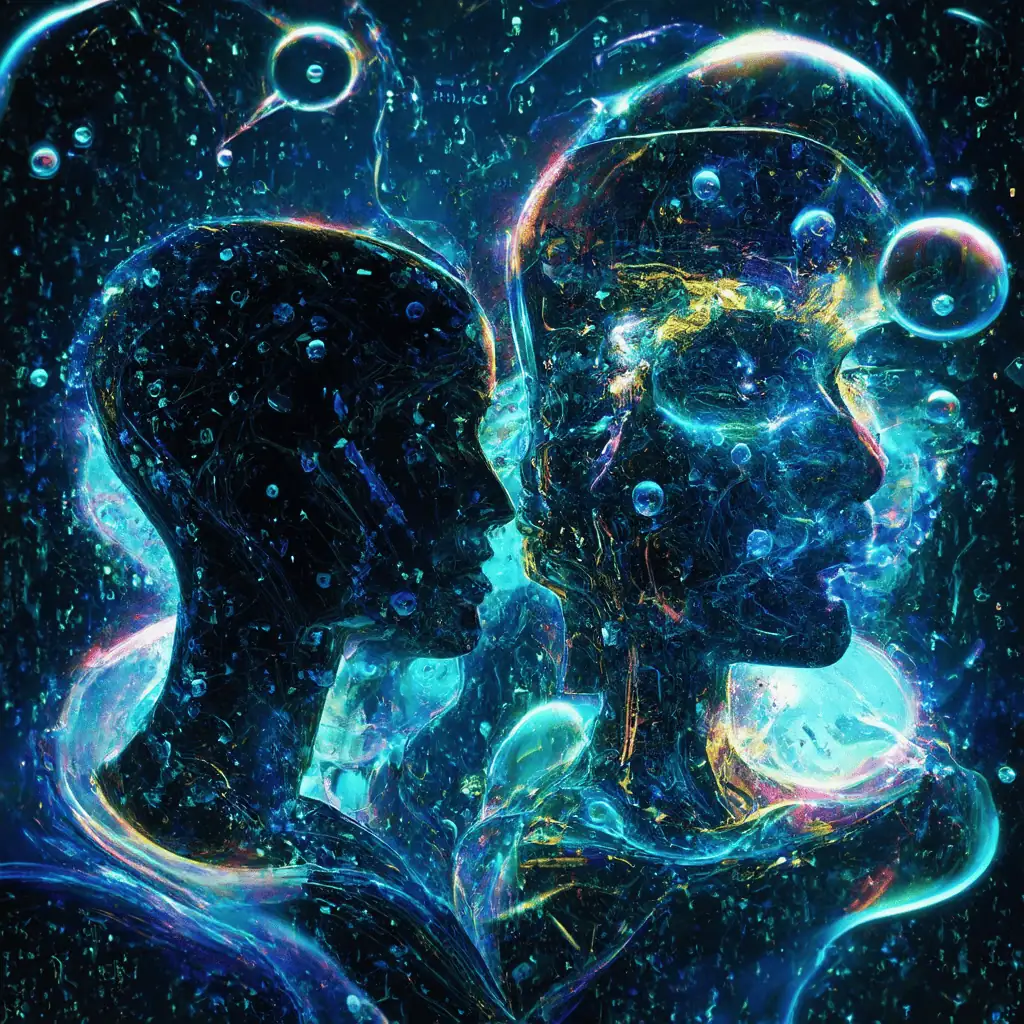
Comparing Open Source Alternatives to ChatGPT
As a pioneer in AI-driven customer engagement, I’ve closely monitored the evolution of open source chatbots. While Messenger Bot offers a proprietary solution, we recognize the value of open source alternatives in driving innovation and accessibility in the chatbot landscape.
Is there an open source like chat GPT?
Yes, several open-source alternatives to ChatGPT exist, each with unique strengths:
1. Alpaca-LoRA: A fine-tuned version of Meta’s LLaMA model, known for efficient training and high-quality text generation.
2. Vicuna-13B: Developed by UC Berkeley researchers, this model excels in various language tasks.
3. BLOOM: A multilingual model by BigScience, supporting 46 languages and 13 programming languages.
4. GPT-J: An open-source alternative to GPT-3, suitable for diverse natural language processing tasks.
5. Pythia: A family of language models offering flexibility for different applications.
6. Dolly: Created by Databricks, this model excels in instruction-following tasks.
7. OpenAssistant: A collaborative effort focusing on ethical AI development.
8. ChatRWKV: Known for efficiency and scalability in chat applications.
9. LLaMA: Meta’s foundational model, serving as a basis for many fine-tuned variants.
10. FLAN-T5: Google’s instruction-tuned model, capable of performing various language tasks with high accuracy.
These alternatives provide developers with accessible tools for natural language processing, conversational AI, and text generation. While they may not match ChatGPT’s full capabilities, they offer significant potential for customization and integration into various applications.
Open source chatbot GitHub repositories
GitHub hosts a wealth of open source chatbot projects, catering to different needs and skill levels. Here are some noteworthy repositories:
1. Botpress: A comprehensive platform for building, running, and improving conversational AI bots.
2. Rasa: An advanced framework for developing contextual AI assistants and chatbots.
3. DialoGPT: Microsoft’s large-scale pre-trained dialogue response generation model.
4. DeepPavlov: An open-source conversational AI library for deep learning end-to-end dialogue systems and chatbots.
5. Leon: An open-source personal assistant with a focus on privacy and customization.
6. Botkit: A developer tool for building chat bots, apps and custom integrations for major messaging platforms.
7. BotBuilder-Samples: Microsoft’s collection of sample bots built using the Bot Framework SDK.
8. Hugging Face Transformers: While not exclusively for chatbots, this library provides pre-trained models that can be used for conversational AI.
These repositories offer a range of options for developers looking to build or customize their own chatbots. From beginner-friendly frameworks to advanced AI models, the open source community provides tools that can rival commercial solutions in many aspects.
At Messenger Bot, we appreciate the innovation driven by these open source projects. They contribute to the overall advancement of conversational AI technology, which ultimately benefits all users of AI chatbots, including our customers. While our platform offers a more streamlined, out-of-the-box solution, we recognize that open source alternatives provide valuable options for businesses with specific customization needs or technical expertise.
Evolution of ChatGPT and Open Source Status
At Messenger Bot, we’ve closely followed the evolution of ChatGPT and its impact on the AI landscape. While we offer our own advanced chatbot features, it’s crucial to understand the broader context of AI development, including the status of leading models like ChatGPT.
Is chat GPT still open source?
ChatGPT is not open source. OpenAI, the company behind ChatGPT, has not released the source code for this advanced language model. Initially founded as a non-profit organization aiming to make AI research publicly accessible, OpenAI transitioned to a “capped-profit” model in 2019. This strategic shift resulted in OpenAI maintaining proprietary control over its most advanced AI models, including GPT-3 and its successors.
The confusion about ChatGPT’s open-source status may stem from OpenAI’s earlier practices and the existence of open-source alternatives. However, the core technology powering ChatGPT, including GPT-3.5 and GPT-4, remains closed-source. OpenAI provides access to these models through APIs, allowing developers to integrate the technology into their applications without exposing the underlying code.
For those seeking open-source alternatives, several options exist:
1. BLOOM: A multilingual language model developed by BigScience.
2. GPT-J: An open-source GPT-3-like model created by EleutherAI.
3. BERT: Google’s bidirectional transformer model for natural language processing.
4. T5: Another open-source model by Google, designed for text-to-text transfer learning.
These open-source models, while powerful, generally do not match the capabilities of ChatGPT. The decision to keep ChatGPT closed-source allows OpenAI to maintain control over its development, ensure responsible use, and potentially monetize the technology to fund further research.
OpenAI’s transition from open to closed source
OpenAI’s journey from an open-source advocate to a more closed model reflects the complex landscape of AI development. This transition has significant implications for the AI community and businesses like ours at Messenger Bot.
Key milestones in OpenAI’s transition:
1. 2015: OpenAI founded as a non-profit, committed to open-source AI research.
2. 2018: Introduction of the “OpenAI LP” structure, allowing limited financial returns for investors.
3. 2019: Release of GPT-2, with a phased release strategy due to concerns about misuse.
4. 2020: GPT-3 launch, marking a shift towards a more closed, API-based model.
5. 2022: ChatGPT release, solidifying OpenAI’s position as a leader in proprietary AI models.
This shift has sparked debate within the AI community. Proponents argue that it allows for more responsible AI development and deployment, while critics contend it hampers collaborative progress and accessibility.
For businesses, this transition means adapting to a new landscape where cutting-edge AI capabilities are often accessed through APIs rather than directly implemented. At Messenger Bot, we’ve embraced this change by integrating advanced AI capabilities into our platform, ensuring our users benefit from state-of-the-art technology while maintaining ease of use.
The move towards closed-source models has also intensified competition in the AI space. Companies like Anthropic and DeepMind are developing their own large language models, pushing the boundaries of what’s possible in AI.
Despite the shift, OpenAI continues to contribute to the open-source community through projects like Gym for reinforcement learning and CLIP for vision-language models. These contributions, alongside their closed-source projects, highlight the complex balance between open collaboration and proprietary development in the AI field.
As we continue to develop our chatbot solutions, we remain committed to leveraging the best of both worlds – integrating cutting-edge AI capabilities while maintaining the flexibility and customization that open-source principles inspire. This approach allows us to offer powerful, tailored solutions that meet the diverse needs of our clients in an ever-evolving AI landscape.
Exploring Free AI Chatbot Options
At Messenger Bot, we understand the importance of accessible AI technology. While we offer premium chatbot solutions, we also recognize the value of exploring free alternatives. Let’s dive into the world of free AI chatbots and discover some of the best options available.
Is there any free AI chatbot?
Yes, there are several free AI chatbots available, each offering unique features and capabilities. These chat bot open source and proprietary options provide valuable opportunities for businesses and individuals to explore AI-driven conversations without initial investment.
1. ChatGPT: OpenAI’s renowned conversational AI, accessible through their website, offers advanced language understanding and generation capabilities.
2. Google Bard: This AI chatbot by Google provides responses based on real-time web information, making it a powerful tool for up-to-date conversations.
3. Claude AI: Developed by Anthropic, Claude is a versatile AI assistant available for free with registration, known for its strong language comprehension.
4. Bing Chat: Microsoft’s AI-powered chatbot, integrated into Bing search, combines conversational abilities with web search functionality.
5. Character AI: This platform allows users to create and interact with AI personalities, offering a unique approach to chatbot interactions.
6. Replika: An AI companion app focused on emotional support, Replika offers a more personal chatbot experience.
7. YouChat: This search-integrated AI chatbot by You.com combines conversational AI with web search capabilities.
8. Perplexity AI: Offering a blend of AI chat and real-time web search, Perplexity AI provides informative and current responses.
9. Pi: Inflection AI’s conversational assistant, Pi is free to use and designed for open-ended conversations.
10. Botpress: An open-source chatbot platform that allows developers to create and customize their own AI chatbots.
While these free options offer impressive capabilities, it’s important to note that they may have usage limits or require account creation. For businesses seeking more robust, customizable solutions, our Messenger Bot platform offers advanced features tailored to specific business needs.
Best AI chats and chatbots online free
When it comes to the best AI chats and chatbots online free, several options stand out for their unique features and capabilities. At Messenger Bot, we always encourage exploring various tools to understand the landscape better. Here’s a closer look at some of the top free AI chatbots:
1. ChatGPT: Widely regarded as one of the best ai chatbot options, ChatGPT excels in generating human-like text across a wide range of topics. Its ability to understand context and provide detailed responses makes it a versatile tool for various applications.
2. Google Bard: As a strong contender in the free ai chatbot arena, Bard leverages Google’s vast knowledge base to provide up-to-date and informative responses. It’s particularly useful for current events and factual queries.
3. Bing Chat: Microsoft’s offering integrates seamlessly with web search, making it one of the best chatbots for research-oriented tasks. It provides a blend of conversational AI and information retrieval.
4. Claude AI: Known for its strong ethical guidelines and ability to handle complex queries, Claude is among the top chatbots free options for those seeking nuanced conversations.
5. Replika: For users looking for a more personal experience, Replika stands out among chat bots online. It’s designed to be an AI companion, focusing on emotional support and casual conversation.
6. Brain Pod AI’s Chat Assistant: While not entirely free, Brain Pod AI offers a powerful AI chat assistant with a free trial, allowing users to experience advanced conversational AI capabilities.
7. Botpress: As an open source chatbot platform, Botpress offers flexibility for developers to create custom chatbot solutions. It’s one of the best options for those looking to build and deploy their own AI chatbots.
These chatbots free online options showcase the diversity in the AI chatbot landscape. Each offers unique strengths, whether it’s language processing, information retrieval, or emotional intelligence.
For businesses looking to implement chatbot solutions, exploring these free options can provide valuable insights. However, for more tailored, business-specific needs, our Messenger Bot platform offers customizable solutions that can be integrated seamlessly into your existing systems.
Remember, while these free chatbots offer impressive capabilities, they may have limitations in terms of customization, data privacy, and integration with business systems. For comprehensive, business-grade solutions, consider exploring our free trial offer to experience the full potential of AI-powered customer engagement tailored to your specific needs.
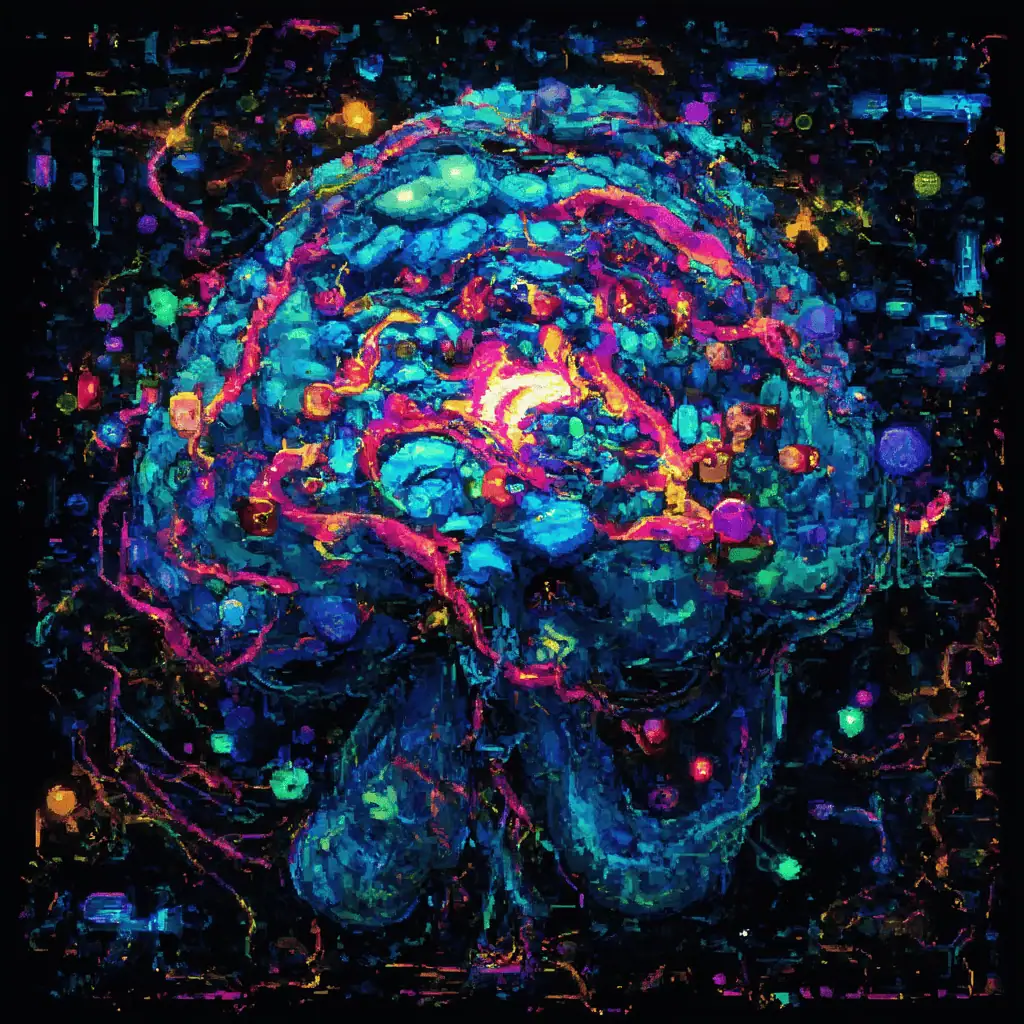
Leveraging Free AI Chat APIs
At Messenger Bot, we’re always exploring innovative ways to enhance AI-driven conversations. While our platform offers robust, customizable solutions, we recognize the value in understanding the landscape of free AI chat APIs. Let’s dive into some exciting options available in the market.
Is there any free AI chat API?
Yes, there are several free AI chat APIs available, each offering unique features and capabilities. These open source chatbot API options provide developers and businesses with opportunities to experiment with AI-driven conversations without initial investment.
1. IBM Watson Assistant: This cloud-based natural language processing service offers a free tier with 10,000 API calls per month, making it an excellent choice for chat bot open source projects.
2. Dialogflow: Google’s conversational AI platform provides a free tier allowing up to 180 requests per minute, ideal for developing chatbots online free.
3. Microsoft Bot Framework: With a free tier offering limited features, this platform is great for building and deploying basic chatbots.
4. Wit.ai: Facebook’s natural language processing platform is free for both commercial and non-commercial use, making it a versatile option for various chatbot applications.
5. RASA: As an open-source machine learning framework, RASA is perfect for developers looking to create custom automated text and voice-based conversations.
6. Botpress: This open-source conversational AI platform offers a free Community Edition, ideal for those seeking a comprehensive chat bot open source solution.
7. Pandorabots: With a free tier offering up to 1,000 API calls per month, Pandorabots is suitable for small-scale chatbot projects.
8. Botkit: This open-source developer tool is excellent for building chat bots, apps, and custom integrations, especially for those looking to create a free chatbot.
9. Recast.AI: Providing a free plan with up to 5,000 requests per month, Recast.AI is a solid choice for medium-sized chatbot projects.
10. Chatfuel: While primarily focused on Facebook Messenger bots, Chatfuel offers a free plan with basic features, making it one of the best ai chatbot options for social media integration.
When selecting a free AI chat API, it’s crucial to consider factors such as request limits, supported languages, integration capabilities, and potential upgrade paths for scalability. While these free options offer great starting points, businesses looking for more advanced features and customization might benefit from exploring our Messenger Bot platform.
Open source chatbot API options
In the realm of open source chatbot API options, several platforms stand out for their flexibility, community support, and robust features. At Messenger Bot, we appreciate the innovation these open-source solutions bring to the AI chatbot landscape. Here’s a closer look at some noteworthy options:
1. RASA: As one of the most popular open source chatbot frameworks, RASA offers a comprehensive solution for building contextual AI assistants. It’s particularly well-suited for developers looking to create sophisticated, custom chatbots.
2. Botpress: This open-source platform provides a visual flow editor and a powerful SDK, making it easier for developers to create complex conversational flows. Botpress is an excellent choice for those seeking a balance between ease of use and customization.
3. OpenDialog: This open-source conversational AI platform focuses on creating human-like conversations. It’s particularly useful for businesses looking to implement chatbots free online with natural language processing capabilities.
4. Chatterbot: A machine-learning based conversational dialog engine, Chatterbot is perfect for developers who want to create Python-based chatbots. It’s one of the best ai chatbot options for those familiar with Python programming.
5. Hugging Face: While not strictly a chatbot API, Hugging Face provides open-source tools and models that can be used to build sophisticated chatbots. It’s an excellent resource for those looking to leverage state-of-the-art natural language processing models.
6. Mycroft AI: This open-source voice assistant platform can be adapted for text-based chatbots, offering a unique approach to creating conversational AI.
7. AIML (Artificial Intelligence Markup Language): While not an API itself, AIML is an XML dialect for creating natural language software agents, widely used in open source chatbot development.
These open source chatbot API options offer great flexibility and customization possibilities. They’re particularly useful for developers and businesses looking to create tailored chatbot solutions or integrate AI-driven conversations into existing systems.
However, it’s important to note that while these platforms offer powerful tools, they often require significant development expertise to implement effectively. For businesses seeking a more streamlined solution with robust features out of the box, our Messenger Bot platform offers a user-friendly alternative that combines the power of AI with ease of use.
Additionally, for those interested in exploring advanced AI solutions, Brain Pod AI’s Chat Assistant provides a sophisticated AI-powered chat solution with a free trial, allowing users to experience cutting-edge conversational AI capabilities.
Remember, whether you choose an open-source solution or a managed platform like Messenger Bot, the key is to select a tool that aligns with your specific needs, technical capabilities, and long-term goals for AI-driven customer engagement.
OpenAI’s Current Open Source Status
At Messenger Bot, we’ve been closely following the evolving landscape of AI development, including the shifts in OpenAI’s approach to open source. Understanding these changes is crucial for businesses and developers looking to leverage cutting-edge AI technologies.
Is OpenAI still open source?
No, OpenAI is no longer open source. The company transitioned from its initial open-source model to a more closed approach in 2019. This shift was driven by several factors:
1. Competitive advantage: OpenAI now protects its proprietary research and algorithms to maintain an edge in the rapidly advancing field of AI.
2. Safety concerns: The company aims to mitigate potential misuse of advanced AI technologies by limiting open access.
3. Commercial interests: OpenAI has moved towards developing profitable products and services, necessitating a more closed approach.
While OpenAI still releases some public research papers and offers limited APIs, its core technologies, including GPT-3 and DALL-E, are not open source. The company now operates under a “capped-profit” model, balancing commercial pursuits with its mission to ensure artificial general intelligence (AGI) benefits humanity.
OpenAI continues to engage with the AI community through research collaborations, limited API access for developers, and public demonstrations of AI capabilities. However, this closed-source approach has sparked debate within the AI community about transparency, accessibility, and the ethical implications of AI development.
As a provider of AI-powered solutions, we at Messenger Bot understand the importance of balancing innovation with responsibility. While we leverage advanced AI technologies, we also prioritize transparency and ethical considerations in our chatbot features.
Alternatives to OpenAI for open source AI
While OpenAI has moved away from open source, there are still numerous alternatives available for those seeking open source AI solutions. At Messenger Bot, we recognize the value of open source in fostering innovation and collaboration. Here are some notable open source alternatives to OpenAI:
1. TensorFlow: Developed by Google, TensorFlow is one of the most popular open source libraries for machine learning and deep learning. It offers a comprehensive ecosystem for building and deploying AI models.
2. PyTorch: Created by Facebook’s AI Research lab, PyTorch is known for its dynamic computational graphs and ease of use in developing deep learning models.
3. Hugging Face Transformers: This library provides thousands of pretrained models for natural language processing tasks, making it an excellent resource for chatbot development and other NLP applications.
4. Apache MXNet: Supported by Amazon Web Services, MXNet is a flexible and efficient deep learning framework that scales well from mobile devices to distributed GPU clusters.
5. RASA: As an open source machine learning framework specifically designed for chatbots and conversational AI, RASA is a powerful alternative for building sophisticated chat bot open source projects.
6. Botpress: This open-source conversational AI platform offers a comprehensive solution for building and deploying chatbots, making it a strong contender in the free ai chatbot space.
7. Scikit-learn: While not specifically for deep learning, this library offers a wide range of machine learning algorithms and is excellent for data preprocessing and model evaluation.
8. Keras: Now integrated with TensorFlow, Keras provides a high-level neural networks API, making it easier to build and experiment with deep learning models.
9. Mycroft AI: As an open source voice assistant platform, Mycroft can be adapted for various AI applications, including text-based chatbots.
10. OpenNMT: This open source neural machine translation system is particularly useful for building multilingual AI applications.
These open source alternatives offer great flexibility and customization possibilities. They’re particularly valuable for developers and businesses looking to create tailored AI solutions or integrate AI-driven conversations into existing systems.
However, it’s important to note that while these platforms offer powerful tools, they often require significant development expertise to implement effectively. For businesses seeking a more streamlined solution with robust features out of the box, our Messenger Bot platform offers a user-friendly alternative that combines the power of AI with ease of use.
Additionally, for those interested in exploring advanced AI solutions without the complexities of open source implementation, Brain Pod AI’s Chat Assistant provides a sophisticated AI-powered chat solution with a free trial, allowing users to experience cutting-edge conversational AI capabilities.
At Messenger Bot, we believe in providing accessible AI solutions that cater to a wide range of needs. Whether you’re looking to leverage open source technologies or seeking a managed platform, the key is to select a tool that aligns with your specific requirements, technical capabilities, and long-term goals for AI-driven customer engagement. Our platform is designed to offer the best of both worlds – advanced AI capabilities with user-friendly implementation, ensuring you can set up your first AI chatbot in less than 10 minutes.
Implementing Open Source Chatbots
At Messenger Bot, we understand the importance of leveraging open-source technologies to create powerful and customizable chatbot solutions. Implementing open-source chatbots can provide businesses with greater flexibility and control over their conversational AI experiences. Let’s explore some key considerations and options for implementing open-source chatbots.
Open-source chatbot UI design considerations
When designing the user interface (UI) for an open-source chatbot, it’s crucial to prioritize user experience and functionality. Here are some important considerations:
1. Simplicity: Keep the UI clean and intuitive. Users should be able to interact with the chatbot effortlessly.
2. Responsiveness: Ensure the UI adapts seamlessly to different devices and screen sizes for a consistent experience across platforms.
3. Branding: Customize the UI to align with your brand’s visual identity, including colors, fonts, and logo placement.
4. Conversation Flow: Design the UI to support natural conversation flows, with clear indications of user and bot messages.
5. Input Options: Incorporate various input methods such as text, buttons, and quick replies to enhance user interaction.
6. Multimedia Support: Enable the UI to display and handle different types of media, including images, videos, and documents.
7. Accessibility: Implement features that make the chatbot accessible to users with disabilities, following WCAG guidelines.
8. Error Handling: Design clear error messages and recovery paths to guide users when issues occur.
9. Feedback Mechanisms: Incorporate ways for users to rate their experience or provide feedback on the chatbot’s performance.
10. Integration: Ensure the UI can be easily integrated into existing websites or applications without disrupting the overall design.
When implementing these UI considerations, it’s beneficial to leverage open-source frameworks and libraries. For instance, Botpress offers a customizable open-source chatbot UI that can be tailored to meet specific design requirements while maintaining a user-friendly interface.
Chatbot framework open-source options
Choosing the right open-source chatbot framework is crucial for successful implementation. Here are some popular options to consider:
1. RASA: A powerful machine learning-based framework that allows for highly customizable chatbot development. It’s particularly strong in natural language understanding (NLU) and dialogue management.
2. Botpress: This open-source platform offers a visual flow editor, making it easier for non-developers to create complex conversational flows. It also provides built-in NLU capabilities and can be extended with custom modules.
3. Dialogflow: While not entirely open-source, Google’s Dialogflow offers a free tier and open-source client libraries, making it a popular choice for building AI-powered conversational interfaces.
4. ChatterBot: A Python library that makes it easy to generate automated responses to user inputs. It’s designed to be language-independent and is highly adaptable.
5. BotKit: Now part of Microsoft, BotKit is an open-source developer tool for building chat bots, apps, and custom integrations for major messaging platforms.
6. OpenDialog: This framework focuses on creating contextual conversations and offers a unique approach to managing conversational flows.
7. Hugging Face’s Transformers: While not a complete chatbot framework, this library provides access to state-of-the-art pre-trained models that can be used to build sophisticated chatbots.
When selecting a framework, consider factors such as:
– Ease of use and learning curve
– Scalability and performance
– Community support and documentation
– Integration capabilities with existing systems
– Customization options
At Messenger Bot, we’ve leveraged insights from various open-source projects to develop our advanced chatbot features. While open-source options offer great flexibility, they often require significant development resources. For businesses looking for a more streamlined solution, our platform combines the power of AI with user-friendly implementation, allowing you to set up your first AI chatbot in less than 10 minutes.
Additionally, for those interested in exploring cutting-edge AI chat solutions without the complexities of open-source implementation, Brain Pod AI’s Chat Assistant offers a sophisticated AI-powered chat solution with a free trial, allowing users to experience advanced conversational AI capabilities.
Implementing open-source chatbots can be a rewarding endeavor, offering unparalleled customization and control. However, it’s essential to weigh the benefits against the resources required for development and maintenance. Whether you choose to build a chatbot from scratch using open-source tools or opt for a managed solution like Messenger Bot, the key is to select an approach that aligns with your technical capabilities, business goals, and customer engagement strategies.

